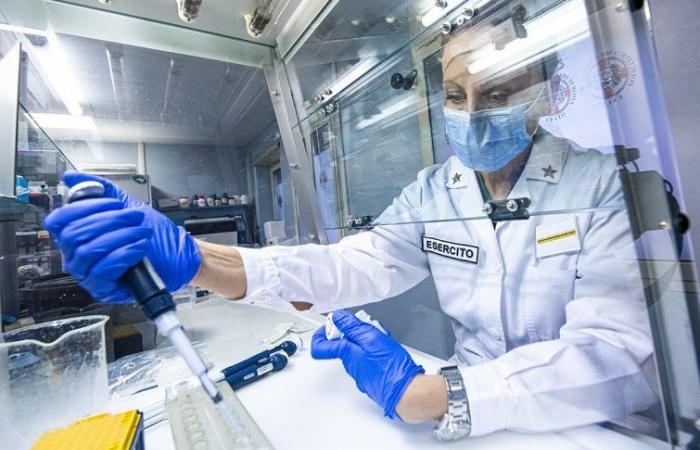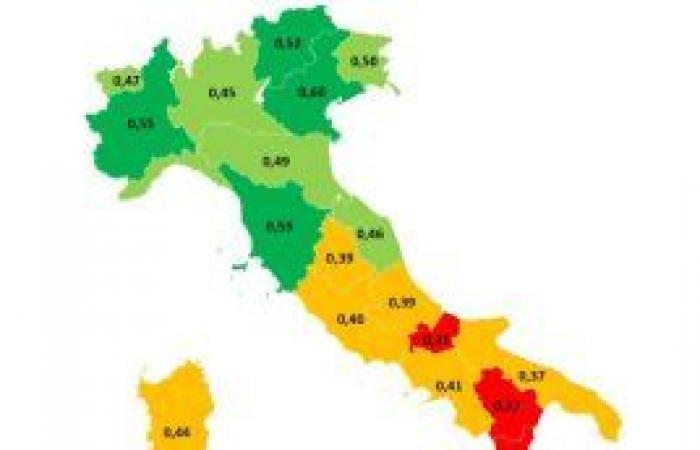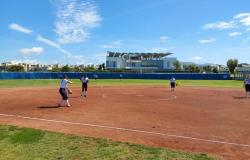The 2024 Report “Opportunities for health protection: regional performances” by Crea Sanità presented in Rome. Only 32.6 million (55%) of our compatriots live in areas where good standards of care and health protection are guaranteed. And they are all in the North. But the South, despite low levels, is improving strongly. A mechanism has been developed to monitor the effects of differentiated autonomy
An Italy split in two on the socio-health performances of the regions: in the North and Center the highest indices are recorded, in the South the worst, but with some distinctions. This is supported by Crea Sanità (Centre for applied economic research in healthcare) in the 2024 Report “Opportunities for health protection: regional performances”, updated to the latest data available for each region, created by 104 experts gathered by Crea into five groups: users, institutions, healthcare professionals, management of healthcare companies and the medical industry, and presented on 20 June in Rome.
Performance map. In detail, four regions of the Centre-North – Veneto, Piedmont, PA Bolzano and Tuscany (over 13.3 million inhabitants) – they reach the best levels with a performance index higher than 50% of the maximum achievable (60%, 55%, 54% and 53% respectively); seven regions – Friuli Venezia Giulia, PA Trento, Emilia-Romagna, Liguria, Valle d’Aosta, Marche and Lombardy (19.3 million inhabitants) – are between 45 and 50%. “Postponed” instead, with levels between 37 and 44%, Sardinia, Campania, Lazio, Umbria, Abruzzo and Puglia (approximately 18.9 million inhabitants). Four Southern regions are highly insufficient, with performance levels below 35%. – Sicily, Molise, Basilicata and Calabria (about 7.5 million inhabitants). The measurement of regional performance in healthcare is not limited to the evaluation of health and economic aspects, but also analyzes the social and equity aspects of care and was conducted on the basis of 20 indicators (with data and numbers collected from the main healthcare databases) divided by five areas: equity, appropriateness, outcomes, innovation, economic-financial and social.
South in pursuit. Although the South is still behind in terms of the level of regional health performance,
it is precisely the South that has recorded the greatest improvements in the last five years,
reveals the report again which this year offers something new: the medium-term dynamics of health protection opportunities in the regions. In the last five years “a 46% improvement in performance was recorded, which affected all geographical divisions and, to a greater extent, the Southern Regions (+75.9% on average), then those of the North-East (+44.9%), those of the North-West (+40.9%) and finally of the Center (+37.4%)”, we read in the Report. For Crea, “even if the South is still behind in terms of performance level and its indices”, although “strongly improving compared to other geographical areas, are still low”, Distances in terms of health protection opportunities are narrowing between the South and the North. This is also because, although there is room for action to reach 100% of the value of the performance index, “it does not seem – explains the Report – that the regions with better performances are able to record significant progress”, probably due to
“the existence of structural limits in the current structure of the healthcare system”.
Monitor differentiated autonomy. On the morning of June 20th, the day after the definitive approval of the bill on differentiated autonomy, it was also presented a mechanism developed by Crea to monitor its effects on healthcare, which will give the first results as soon as differentiated autonomy is granted to one or more Regions. “In the first phase of implementation – it was explained – the dynamics on ten indicators in groups of Regions were calculated and then compared, for the period 2017-2022: the group of autonomous Provinces/Regions or those with special status (Sicily, Sardinia, Valle d’Aosta, Friuli-Venezia Giulia and Trentino-Alto Adige with Trento and Bolzano) towards the others, those in the return plan (Abruzzo, Calabria, Campania, Lazio, Molise, Puglia, Sicily) always towards the others, and that of the Regions that requested differentiated autonomy in 2017 (Lombardy, Veneto, Emilia Romagna), once again towards the others. The results, aggregated into areas of improvement and worsening, were summarized for each group of Regions in a numerical index: the Weighted Synthetic Index (Isp), a measure of the relationship between the areas of worsening and improvement in the period considered. “The value 0 – explains Crea – indicates an overall compensation between the regional improvements and worsening, the value 1 an improvement for all the Regions of the group, the -1 their worsening”. In the first comparison, for the autonomous or special statute Provinces/Regions the ISP is 0.38 and 0.40 for the others. Therefore, in the period 2017-2022, Crea states, “the dynamics in the autonomous or special statute Provinces/Regions was (slightly) worse than in the other group”. In the second comparison, the Regions in the recovery plan recorded an ISP equal to 0.44, compared to 0.37 of the others, therefore, observes Crea, “they fared better than the others”. Finally, in the third comparison, the Regions that requested differentiated autonomy recorded an ISP equal to 0.36 compared to 0.40 for the others.







